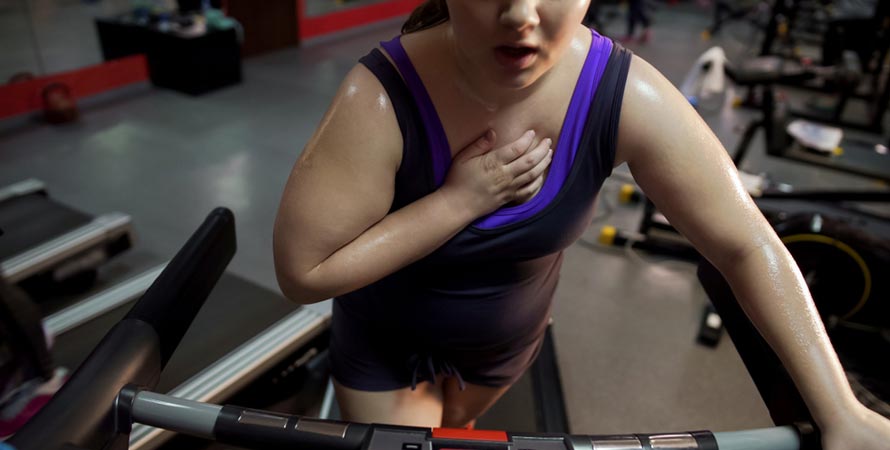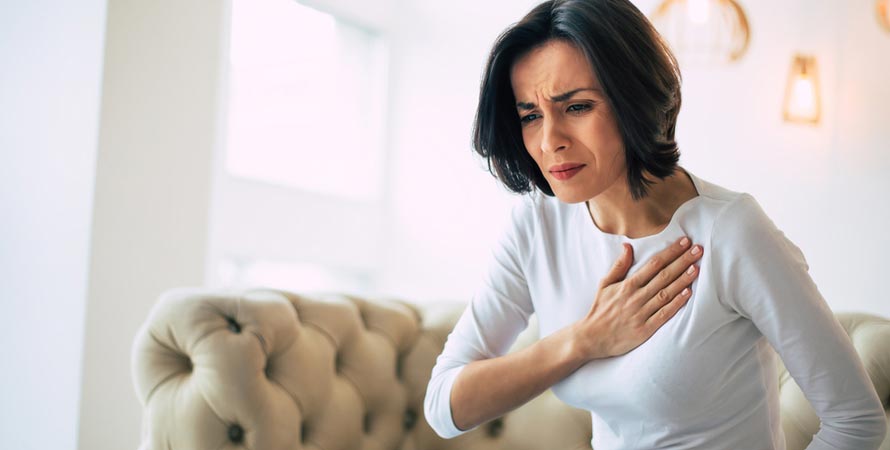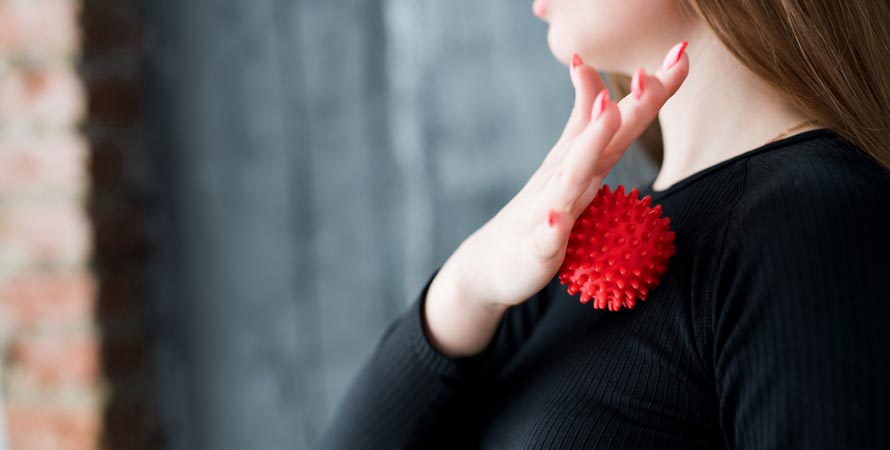Introduction
Pectoral or the chest muscles are responsible for pushing, pulling, and abduction the arms. When these muscles are active, you get that great, wide-stretch feeling when you lift your arms. But, if these muscles are active too much, you might end up with pectoral muscle pain.
What Is A Pectoral Muscle Pain?
Female pectoral muscle pain is a pain or discomfort in your chest, usually in the upper outer part of your chest. This pain is generally experienced in the pectorals or the chest muscles, as the name indicates. Pectoral muscle pain can be caused by overuse, improper training, or genetics. It’s essential to understand what causes pectoral muscle pain to know how to treat it.
The pectoral muscles in your chest keep your arms up and out. They’re also responsible for pushing, pulling, and abduction of the arms. So, when these muscles are active, you get that great, wide-stretch feeling when you lift your arms. If these muscles are active too much, though, you might end up with pectoral muscle pain.
What Causes Female Pectoral Muscle Pain?

Female pectoral muscle pain can be caused by a variety of underlying causes. It is necessary to rule out other possible causes of pain and consult with a doctor if the pain persists.
At the same time, you can do a few things on your own to help manage your pain and improve your pectoral muscle health.
The most common causes of pectoral muscle pain include:
- Overuse
- Damage from heavy loads
- Disease or injury
- Trauma
- Referred pain from another area
- Strain, tear, or muscular damage
A pectoralis is one of the two sets of large, round muscles that extend across the chest. These muscles assist with shoulder extension, lateral movements, and abduction.
Female pectoral muscle pain is often linked to shoulder issues and may help signify pectoralis muscle strain. If you notice pain in your pectoral muscle, it has likely been overused or strained.
A heavy workload, a sudden increase in exercise intensity, or poor form may cause your pain. The shoulder is a complex joint with many supporting muscles, which makes the shoulder susceptible to injury, especially when you overuse the joint to reach for something high.
When you lift something overhead, the primary muscles that support the shoulder, the posterior deltoid and the anterior deltoid become active. These muscles are the primary cause of pectoral muscle pain if they have been overused. In a prolonged or heavy workout, the tendons of the pectoral muscles may stretch, which causes the pectoral muscles to become tired and painful.
Female Pectoral Muscle Pain Symptoms
1. Shrugging or Pulling Shoulders
People experiencing female pectoral muscle pain symptoms often notice that they have a tendency to “shrug” their shoulders. It can be common in those people who drive for a living, sit in static positions for extended periods, or if you have an uncomfortable sleeping set-up. It may also cause pain in the pecs and pain in the rotator cuff muscles. If you often shrug your shoulders, you may want to work to reduce this habit.
On the other hand, if you notice that you frequently make a particular gesture with your arms, you may want to rule out shoulder pain as the cause.
2. Weakness or Numbness When Lifting Arms

People with female pectoral muscle pain symptoms may also notice decreased strength when they lift their arms above their head.
You may feel numbness or even a tingle in your arm during the motion. The numbness can mean many things, and it can occur when you do specific movements that are often repetitive. It feels almost like the communication is cut off from that particular area and proceeds to just go fuzzy, numb, or feel disjointed in front of the rest of your body.
3. Obvious Breast Pain, Stabbing, Or Burning Sensations
Female pectoral muscle pain symptoms can also be experienced as a sharp or stabbing feeling in the chest or shoulder. It may feel like something is stabbing you in the muscle when you lift your arms.
For some people, their pectoral pain is only present when they lift something heavy. If you have this type of pain, you might notice that you can lift a light object without pain, but the pain comes on when you raise something heavy.
Pectoral pain can also be experienced as aching or soreness in the chest or shoulder area. Some people feel like their pectoral muscles are bruised or beaten up.
The pain may be sharp, stabbing, or aching. It may feel like the muscle is bruised or swollen. It is crucial to determine the cause of your pain to determine the best way to treat it.
4. Pain First Thing In The Morning
If you wake up with pectoral pain, you may want to check if you’re sleeping with your shoulder positioned at an unusual angle. It may cause pectoral pain to occur with the first few movements of the day.
As your body wakes up, you may find that the pectoral muscle appears to be tighter and more difficult to “wake up,” and any sudden movements may make it painful. It is often caused by a muscle strain, so you should visit your doctor to ensure that your pectoral pain isn’t caused by a more severe condition.
5. Pectoral Pain When You Breathe
Tight or tense chest muscles can lead to a feeling of discomfort or breast pain when you inhale and exhale. Tension in the chest muscles may also lead to pain, especially if you have existing issues like a goiter or rheumatism. If you experience pain when inhaling and exhaling, you may have tension in your chest muscles. Tensing your chest muscles can lead to pain, especially if you have existing issues like a goiter or rheumatism.
To alleviate pain and discomfort, you can work on relaxing your chest muscles. The easiest way to do this is through deep breathing. When you inhale, focus on expanding your chest rather than drawing air in through your nose. As you exhale, let your chest deflate rather than push air out through your nose.
Female Pectoral Muscle Pain Treatment
1. How To Diagnose Pectoral Muscle Pain
You’re not alone if you’re experiencing female pectoral muscle pain in one or both of your pectoral muscles. In fact, almost everyone is affected by pectoral muscle pain at some point. It’s a common condition that causes pain when you lift something or stretch your pec muscles. There are different causes of pectoral muscle pain, and it might vary in intensity and duration of symptoms.
There are several different types of pec muscle pain. Some of these are also known as pectoral muscle strains. These symptoms are caused by overuse and overtraining. They are most commonly caused by an imbalance between upper and lower chest muscles.
The first symptom is pain. With overuse, the muscle fibers become shorter and thicker. As a result, the muscle becomes less flexible. The second symptom is a lack of strength and a reduced range of motion. When the fibers become shorter and thicker, the muscles weaken and can’t perform regular movements as easily.
Suppose you’re experiencing female pectoral muscle pain in one or both of your pectoral muscles. In that case, it’s essential to learn what to look for.
Here are some crucial things to keep in the front of your mind:
- The first step is to take inventory of your symptoms.
- Are there times when you feel pain?
- How often does the pain occur?
Use our symptom checklist to see if you can find any other signs of discomfort. Look for a general list of possible symptoms of your pain.
- If you happen to notice some of them and nothing else, it could signify that something is wrong.
- If you don’t experience pain, but notice other signs of discomfort, you may want to consider them too.
2. Ways To Treat Female Pectoral Pain

The best way to treat female pectoral muscle pain is to get it checked out by a doctor. However, if you do have chest pain, you can try some of these steps to ease it:
1. Drink Plenty Of Water
Even if it’s just a few glasses of water, it’ll help you stay hydrated. If you’re dehydrated, it’ll make it harder for your body to get rid of any fluid it’s trying to get rid of.
If you are experiencing female pectoral muscle pain, plenty of water will help the bodywork optimally to eliminate any discomfort you are feeling from the pain and assist in the repair and healing process. Drinking a lot of water is a great way to help with this.
2. Stretch
After water intake, stretch your chest muscles to get them back in working order. You can do this by lifting your arms above your head and stretching them out.
Doing this a few times a day will improve your posture and take pressure off your chest. It will also improve your breathing as your chest will expand easier.
3. Rest and Take Low Impact Exercise
If you are unsure whether a certain activity will cause chest pain, talk to your doctor before engaging in any physical activity.
You may try low-impact exercises, such as swimming or light walking if you have been cleared to exercise. It is also recommended that you avoid situations that generally cause stress and increase your chest pain.
Stress can have a negative impact on physical and mental health, so being mindful of your daily activities can help reduce your stress levels.
4. Take An Over-The-Counter Pain Reliever
You can try taking an over-the-counter pain reliever. While they won’t get rid of the cause of sharp pain in breast, they can help ease your symptoms while you wait for your doctor to get back to you.
The right option for you will depend on various factors, including your age, medical conditions, and any other medications you’re taking. Some prescription medications may also be incompatible with OTC pain relievers.
In addition, it’s important to note that ibuprofen and naproxen are not recommended for people with certain medical conditions, including ulcerative colitis, heart disease, or high blood pressure.
FAQs
Strain in the pectoral muscle might also cause pain that feels as if it's coming from underneath the breast. This type of pain is known as breast drooping pain, or the pulled muscle in chest and it can happen when you lift or carry heavy loads with your arms extended for long periods or if you have large breasts that are heavy for your frame.
Female pectoral muscle pain can be caused by many different health issues, including heart disease, cirrhosis, angina, and aortic aneurysm. It can also be a common side effect of certain medications, medical conditions, and even strenuous exercise.
To reduce your risk of chest pain, you can learn about the top causes of chest pain and take steps to prevent them.
In most cases, female pectoral muscle pain isn't severe and can be treated at home. However, if you are experiencing something new concerning chest pain or something unbearable, please seek medical attention.
Common causes of chest pain include heartburn, asthma, and muscle strain. It is essential to know how to recognize when chest pain is severe so that you can seek help if needed.
Pectoral muscles are the ones that are responsible for the movement of your arms. They are the largest muscles in the chest and are located below the clavicle and are responsible for the movement of the arms and help in lifting, pressing, and holding objects.
Therefore, if you are working out with a lot of weight or doing any exercise above your strength, it causes pectoral muscle soreness. Pectoral muscle tenderness can also be a sign of an infection.
Conclusion
Pectoral pain is usually not severe, and it should go away after a few days of rest. Female pectoral muscle pain causes can be varied. If the pectoral pain persists, you may want to visit a doctor to ensure that no underlying conditions are causing your pain. If you notice any of the pectoral pain symptoms, take them seriously.






